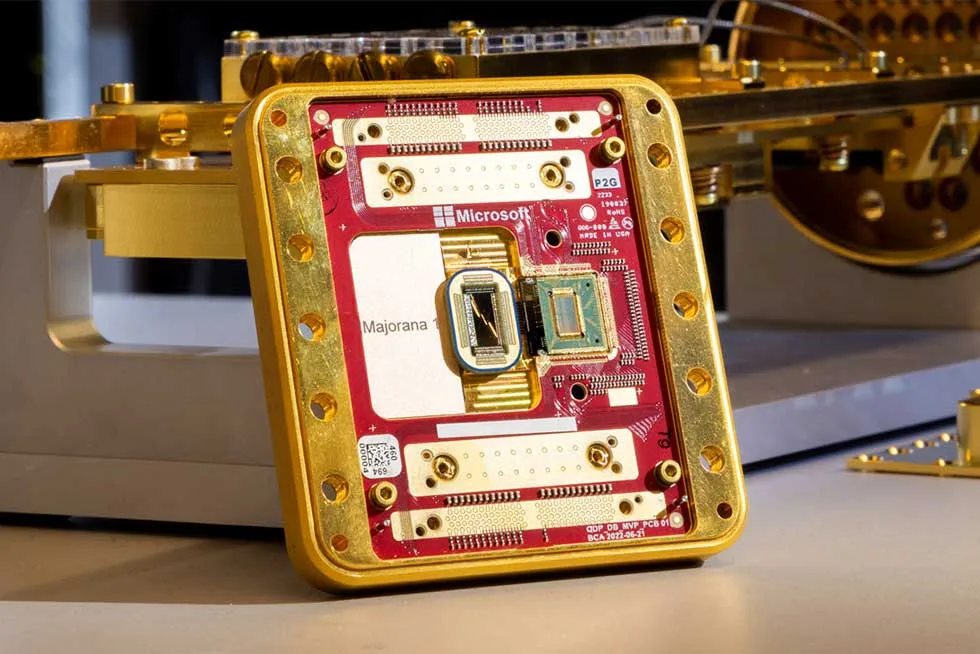Microsoft’s Majorana 1 Chip: A New Era for Quantum Computing
Quantum computing has long been heralded as the next frontier in computing technology, promising to solve problems that are currently impossible for classical computers. Microsoft has taken a significant leap forward in this field with the introduction of its Majorana 1 chip, the world’s first quantum processor powered by a Topological Core architecture. This innovation could transform quantum computing from a futuristic concept into a practical, industrial-scale technology within years, not decades.
In this article, we’ll explore the groundbreaking features of the Majorana 1 chip, the science behind its development, and its potential impact on industries and society.
Table of Contents
- What Is the Majorana 1 Chip?
- The Role of Topoconductors and Majorana Particles
- Why the Majorana 1 Chip Is a Game Changer
- Applications of Quantum Computing with Majorana 1
- Microsoft’s Vision for Quantum Computing
- FAQ: Everything You Need to Know About Majorana 1
- Conclusion: What’s Next for Quantum Computing?

Microsoft’s Majorana 1 Chip
1. What Is the Majorana 1 Chip?
The Majorana 1 chip is Microsoft’s latest breakthrough in quantum computing. It is the first processor to utilize a Topological Core architecture, which leverages a revolutionary material called a topoconductor.
This chip represents a significant milestone in quantum computing, as it provides a clear path toward developing scalable quantum systems that can fit a million qubits on a single chip. For context, today’s quantum computers are limited to just a few hundred qubits, making them insufficient for solving complex, real-world problems.
By combining qubits and surrounding control electronics into a compact design, the Majorana 1 chip can fit into the palm of your hand – a stark contrast to the massive machines required by earlier quantum systems.
2. The Role of Topoconductors and Majorana Particles
At the heart of the Majorana 1 chip lies two key scientific breakthroughs:
Topoconductors
A topoconductor is a new class of material that enables the creation and manipulation of Majorana particles. These materials are essential for producing reliable and scalable qubits.
Topoconductors are to quantum computing what semiconductors were to classical computing – they provide the foundation for revolutionary advancements.
Majorana Particles
Named after Italian physicist Ettore Majorana, these particles exhibit unique properties that make them ideal for quantum computing. They can:
- Protect quantum information from random disturbances, ensuring greater stability.
- Hide quantum information, making it more robust but also harder to measure.
Microsoft has developed a precise measurement technique using microwaves, allowing the detection of quantum states with unparalleled accuracy. This innovation forms the basis of the Majorana 1 chip’s computational power.
3. Why the Majorana 1 Chip Is a Game Changer
The Majorana 1 chip stands out for several reasons:
1. Scalability
The chip’s design allows for a million qubits on a single processor, a critical threshold for solving industrial-scale problems.
2. Compact Design
Unlike other quantum processors that require large, complex setups, the Majorana 1 chip integrates qubits and control electronics into a compact form factor.
3. Digital Control
Traditional quantum systems require fine-tuning of individual qubits, a process that is both time-consuming and impractical. The Majorana 1 chip simplifies this with voltage pulses, akin to flipping a light switch.
4. Energy Efficiency
By reducing the physical and computational overhead, the Majorana 1 chip is more energy-efficient, making it easier to deploy in Azure datacenters and other real-world settings.
4. Applications of Quantum Computing with Majorana 1
The Majorana 1 chip opens the door to solving some of the world’s most pressing challenges. Potential applications include:
- Environmental Sustainability: Breaking down microplastics into harmless byproducts.
- Healthcare: Developing self-healing materials for medical devices.
- Manufacturing: Creating stronger yet lighter materials for construction and aerospace.
- Cryptography: Enhancing encryption methods to protect sensitive data.
These are just a few examples of how quantum computing could revolutionize industries and address societal challenges.
5. Microsoft’s Vision for Quantum Computing
Microsoft envisions a future where quantum computing becomes an integral part of its cloud ecosystem. By integrating the Majorana 1 chip into Azure datacenters, the company aims to make quantum computing accessible to businesses and researchers worldwide.
This aligns with Microsoft’s broader strategy of democratizing advanced technologies, much like it did with cloud computing and AI.
6. FAQ: Everything You Need to Know About Majorana 1
Q1: What makes the Majorana 1 chip different from other quantum processors?
The Majorana 1 chip uses a unique Topological Core architecture and topoconductors, enabling it to scale to a million qubits while maintaining a compact design.
Q2: When will the Majorana 1 chip be commercially available?
Microsoft has not announced a specific release date but expects to deploy the technology within the next few years.
Q3: How does the Majorana 1 chip improve quantum computing performance?
It simplifies qubit measurement and control, reduces physical requirements, and offers unparalleled scalability.
Q4: Can the Majorana 1 chip be integrated into existing systems?
Yes, the chip is designed to fit into Azure datacenters, making it compatible with Microsoft’s cloud infrastructure.
Q5: What industries will benefit most from this technology?
Industries like healthcare, manufacturing, environmental science, and cybersecurity are expected to see the most significant impact.
7. Conclusion: What’s Next for Quantum Computing?
Microsoft’s Majorana 1 chip represents a monumental step forward in quantum computing. By leveraging topoconductors and Majorana particles, the chip offers a practical path to scalable, reliable quantum systems.
As quantum computing moves closer to solving real-world problems, we can expect transformative changes across industries, from healthcare to sustainability. Microsoft’s commitment to integrating these breakthroughs into its Azure platform ensures that quantum computing will not remain confined to research labs but will become a tool for global innovation.
The future of quantum computing is here – and it fits in the palm of your hand.